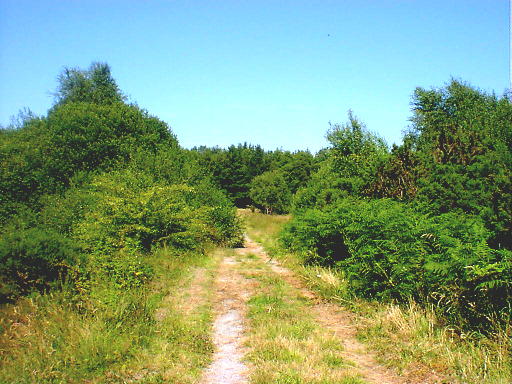For
a long time, peat-the "turf" of Irish
country fireplaces-has been thought of only in
terms of its usefulness to humans. Many countries
have completely destroyed their boglands for
fuel. As unspoiled bogs become harder to find,
conservationists have worked to create a network
of bogland nature reserves.
The fascination of the bogs
can be seen when we look closer and see the
living mosaic of richly-colored bog-mosses and
vivid, filigree lichens.
The plants of the boglands have
to reckon with an impoverished environment. Their
roots reach down into a saturated sponge of
half-rotted vegetation, often several meters
thick and holding hidden reservoirs of water.
Common bogland plants, such as ling heather,
cross-leaved heath, deer sedge, bog-moss and
bogcotton and the exquisite bog asphodel, have
adapted to these acid and nutrient-poor
conditions. Others get their food
carnivorously.
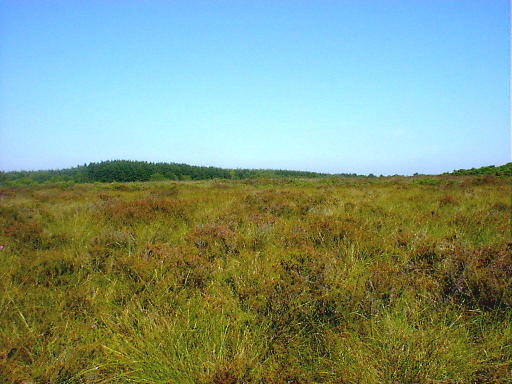
A view across the
heather
The
sundews and butterworts trap insects with their
sticky leaves and digest them. In the pools,
bladderworts suck insects in through trap-doors.
The raised bogs of the midlands
and the blanket bogs of the west and the
mountains have different structures and surfaces.
The raised bogs are made of the dead parts of
sphagnum moss, while the blanket bog consists of
the remains of grasses and sedges.
The accumulation of peat is
possible in Ireland because high rainfall and low
temperatures result in poor evaporation and
waterlogging. These conditions allow for the
accumulation of dead plant material (or peat).
The raised bogs grew up from
shallow lakes, but the blanket bog rests directly
on the stumps of the pine trees of ancient
woodlands, or on stonewalled pastures cleared by
the Neolithic farmers of 5,000 years ago.
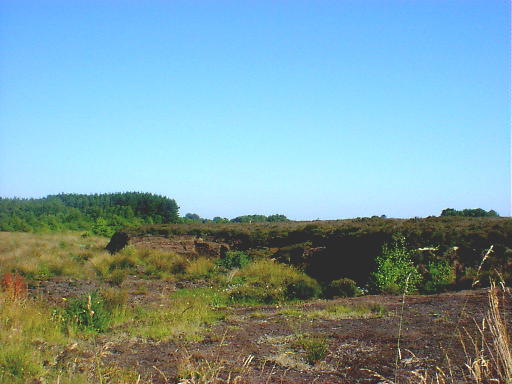
One of the last turf
banks on Clara bog
The
spiky stumps of "bog-deal" can be seen
in many of the lakes and bog-workings of the
west, and archaeologists have been uncovering the
walls of the ancient fields, as in Ceide Hill in
County Mayo.
Raised bogs and some blanket bogs
began to form some 10,000 years ago at the end of
the last Ice Age. The formation of the great
expanses of blanket bog seen today, however,
began some 5,000 years ago. Raised bogs have a
series of hummocks, hollows and pools on their
surface, which are habitats for cranberry and bog
rosemary and many other species.
Blanket bogs contain hummocks and
pools but, in addition, lakes with islands,
natural drains and swallow holes are found.
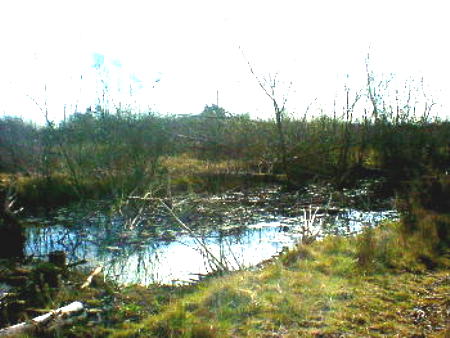
One of
the water pools on the bog
The
vegetation is dominated by purple moor grass,
black bog rush, bog-cotton and deer sedge among
others. In both bog types the variety of habitats
provide a refugee for mammals, birds, frogs,
slugs and a profusion of insects and other small
creatures.
Walking
on the bog for the first time can be a strange
experience. There are seldom any permanent tracks
or landmarks and the way is often blocked by
patches of soft ground or deep pools. In some
places, the surface quakes underfoot like a
water-bed, a reminder that the skin of the bog is
often a mere floating mattress of vegetation.
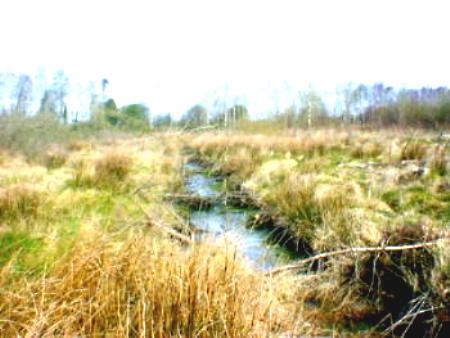
One of
the streams flowing through the bog
Whatever
time of the year you visit Ireland's raised and
blanket bogs you will find them alive with
magical qualities. Depending on the season,
colorful flowers, mosses, wild birds, insects and
mammals can be enjoyed. Your visit will be a
unique chance to photograph and learn about
Ireland's wildlife.
You may want to spend more time
studying the specialized plants and animals found
here or to watch the breeding birds in spring or
the wintering wildfowl. You will see powerful
preserving powers of growing masses of peat which
have covered ancient farmlands along the west
coast, and discover that many of our national
treasures have been recovered from wet, peaty
graves.
